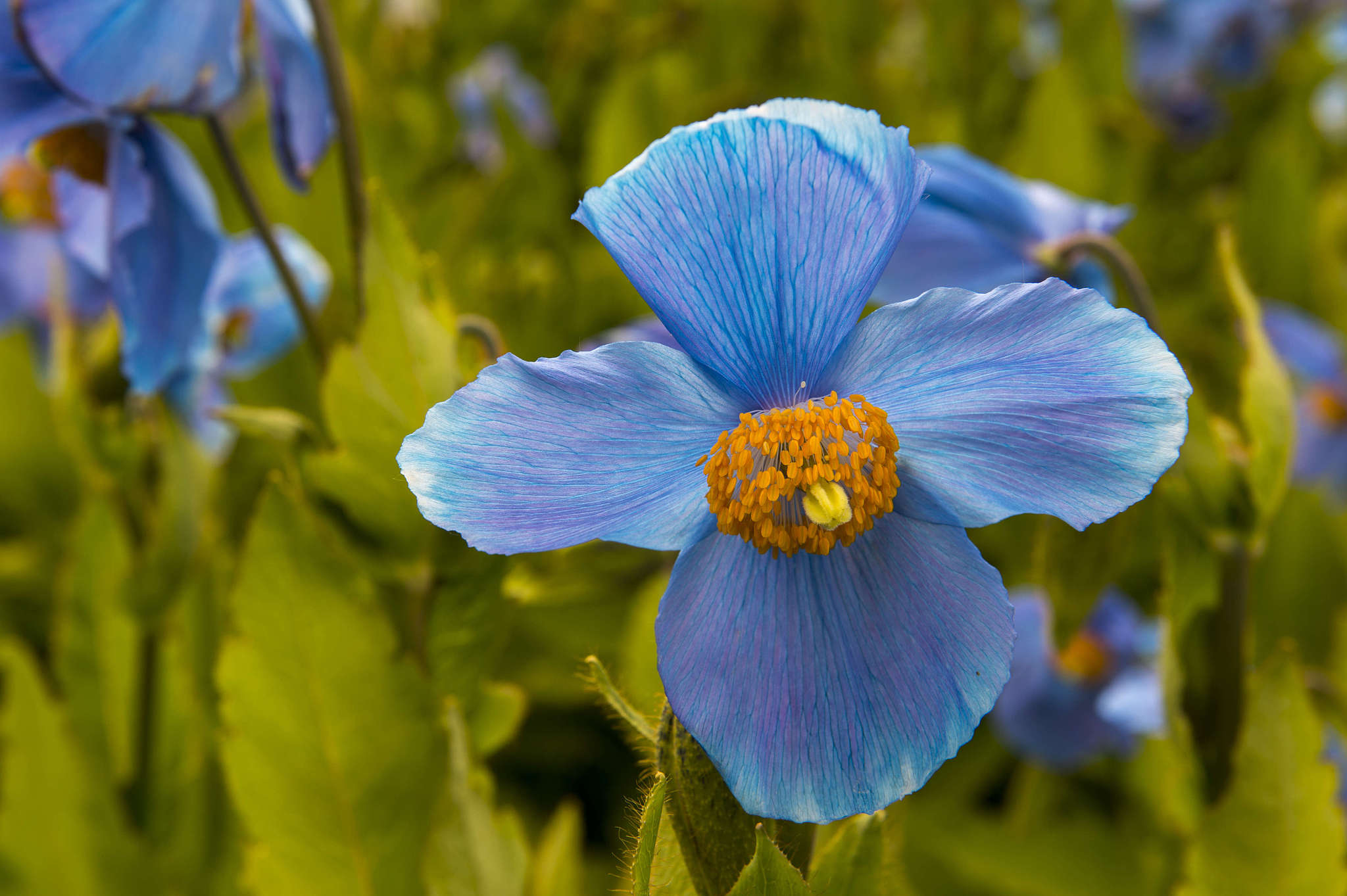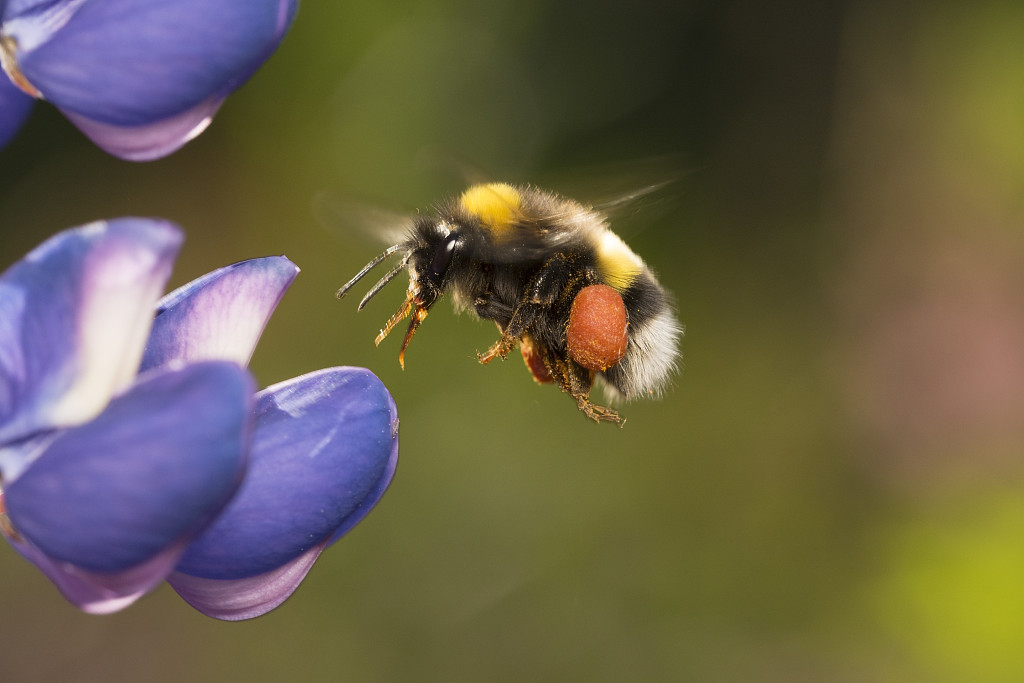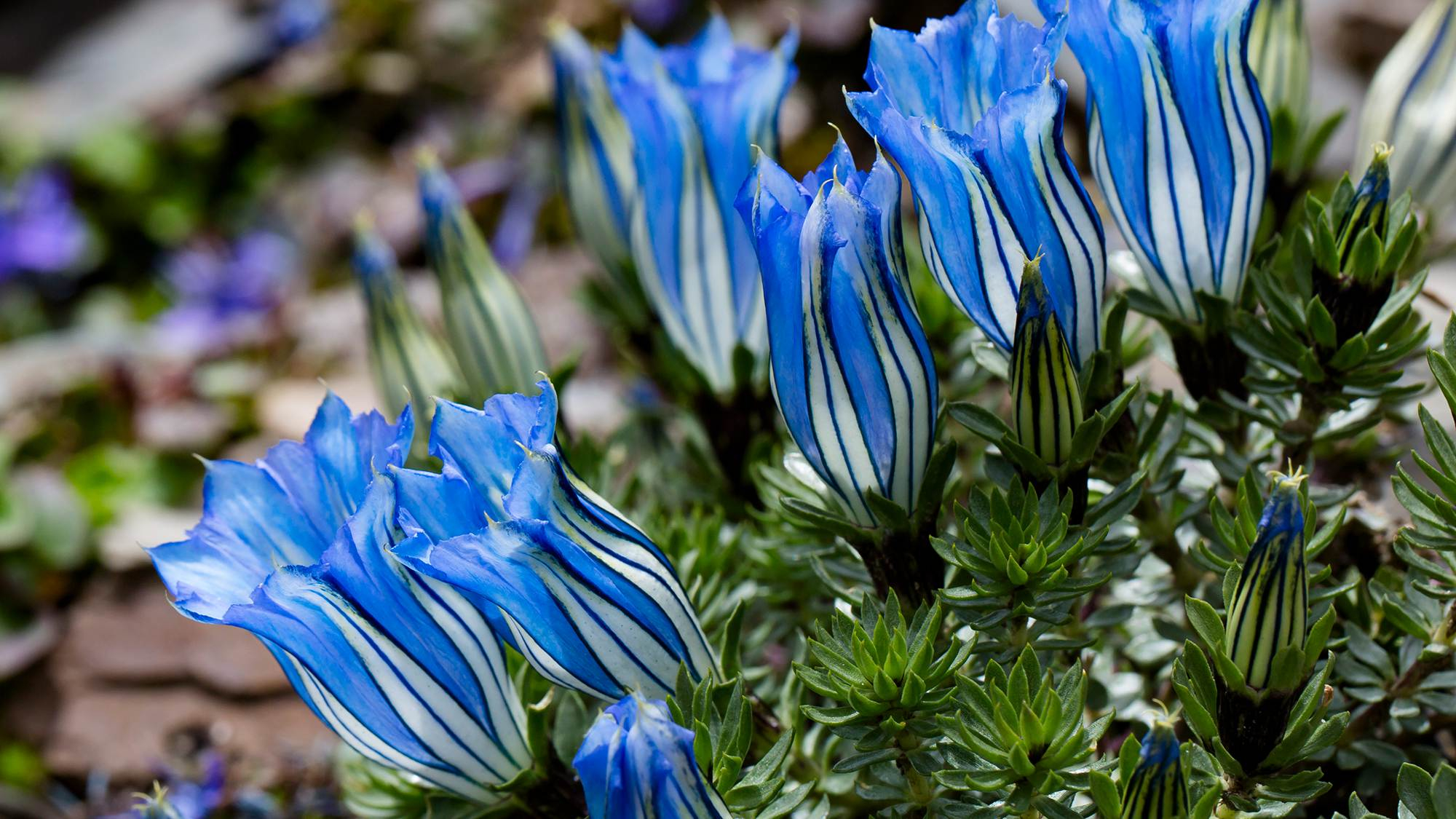
Between June and August, the Qinghai-Tibet Plateau embraces its best season of the year. A massive sea of flowers is in full bloom during this period, appearing like a grand floral bash thrown by nature. Blue and violet dominate the party. But why? Is it one of the evolutionary tricks?

Himalayan blue poppy. /VCG Photo
For plants, the purpose of flowering is to spread pollen grains and produce seeds. They can either self pollinate or rely on bees and other insects for pollination. Due to harsh weather conditions on the plateau, only a few bugs can help the plants in this process.
People may conclude that plants on plateaus would evolve to self pollinate because there are not many pollinators. However, according to studies, the plants at higher altitudes are more dependent on pollinators than those at low altitudes. Thus, the life of flowers on plateaus is closely related to their pollinators – bumblebees.

A bumblebee gets attracted to a purple flower. /VCG Photo
Bees can barely survive the frigid temperatures on plateaus and mountains. However, bumblebees remain active and laborious even in lower temperatures. They have long and thick setae that keep them warm and absorb heat even in weak sunlight.
Blue and violet are bumblebees' favorite colors. Scientists suggest that bumblebees have developed such color preferences over a long period since these flowers are rich in nectar. Years of bountiful rewards have gradually influenced their innate behaviors. Compared to self-pollinated species on the plateau, plants that rely on pollinators can also bring up more tenacious offspring.

Gentiana arethusae flowers. /Courtesy of Peng Jiansheng via Luli Studio
Strong ultraviolet rays on the plateau could be another factor behind the mystery of the blue flowers. Though plenty of flowers burst into bloom every year during this time, not all flowers can bear seeds in the end. Therefore looking their best is crucial in carrying forward their legacy.

Blue poppy flowers on Baima snowy mountains in southwest China's Yunnan Province. /CGTN Photo
China's Flora Tour
From the wetlands along the coast to the dense rainforests hidden in the southwest of China, they all boast an array of plant species. In this series, we will go on a tour to learn about some of the most representative flora in different provinces and see how they live in harmony with the local geography and climate.
Read More:
China's Flora Tour: Tibet-The uphigh beauty in southeastern Tibet
(Cover image provided by Peng Jiansheng from Luli Studio, designed by CGTN's Jia Jieqiong)
(If you want to contribute and have specific expertise, please contact us at nature@cgtn.com.)

Copyright © 2018 CGTN. Beijing ICP prepared NO.16065310-3
Copyright © 2018 CGTN. Beijing ICP prepared NO.16065310-3